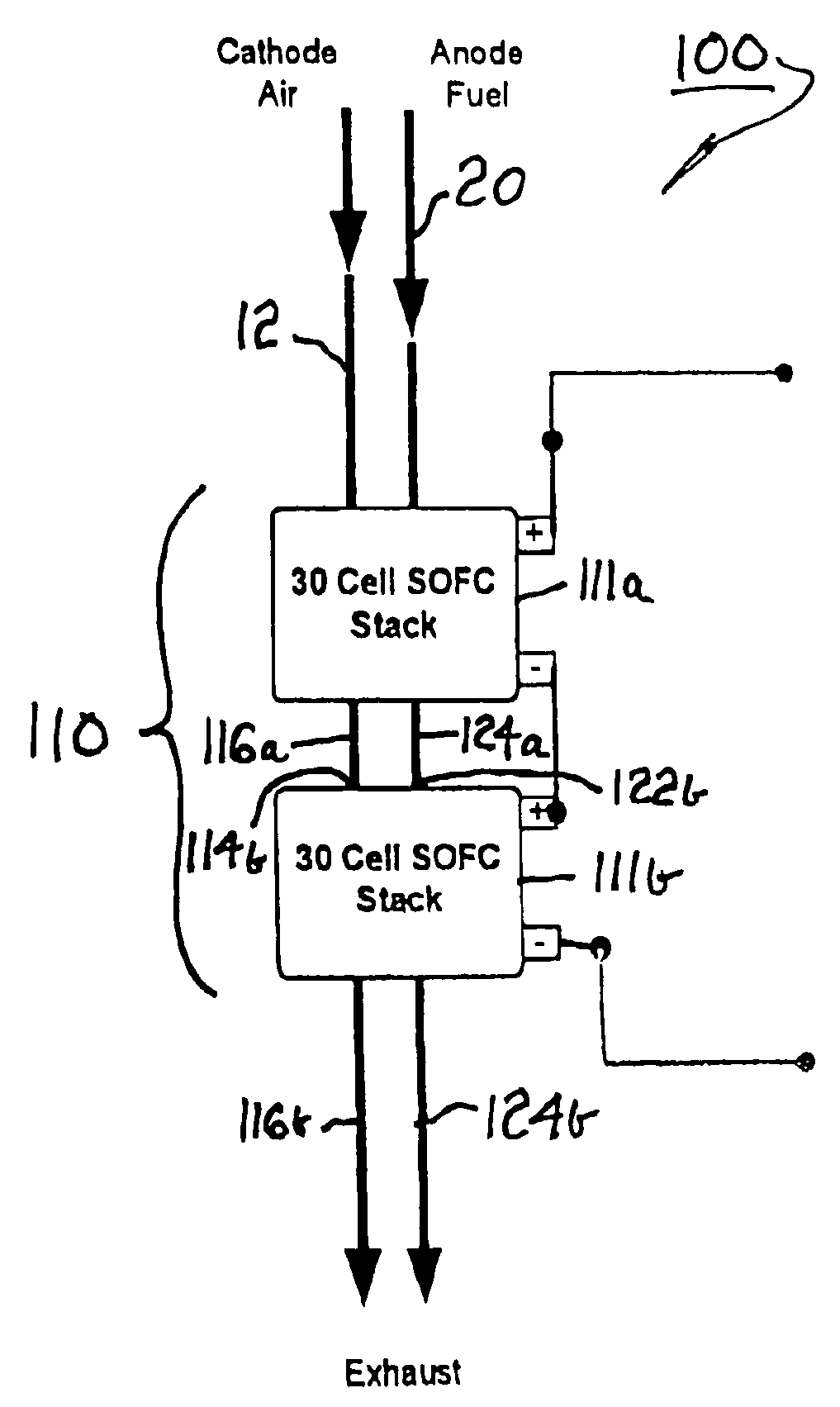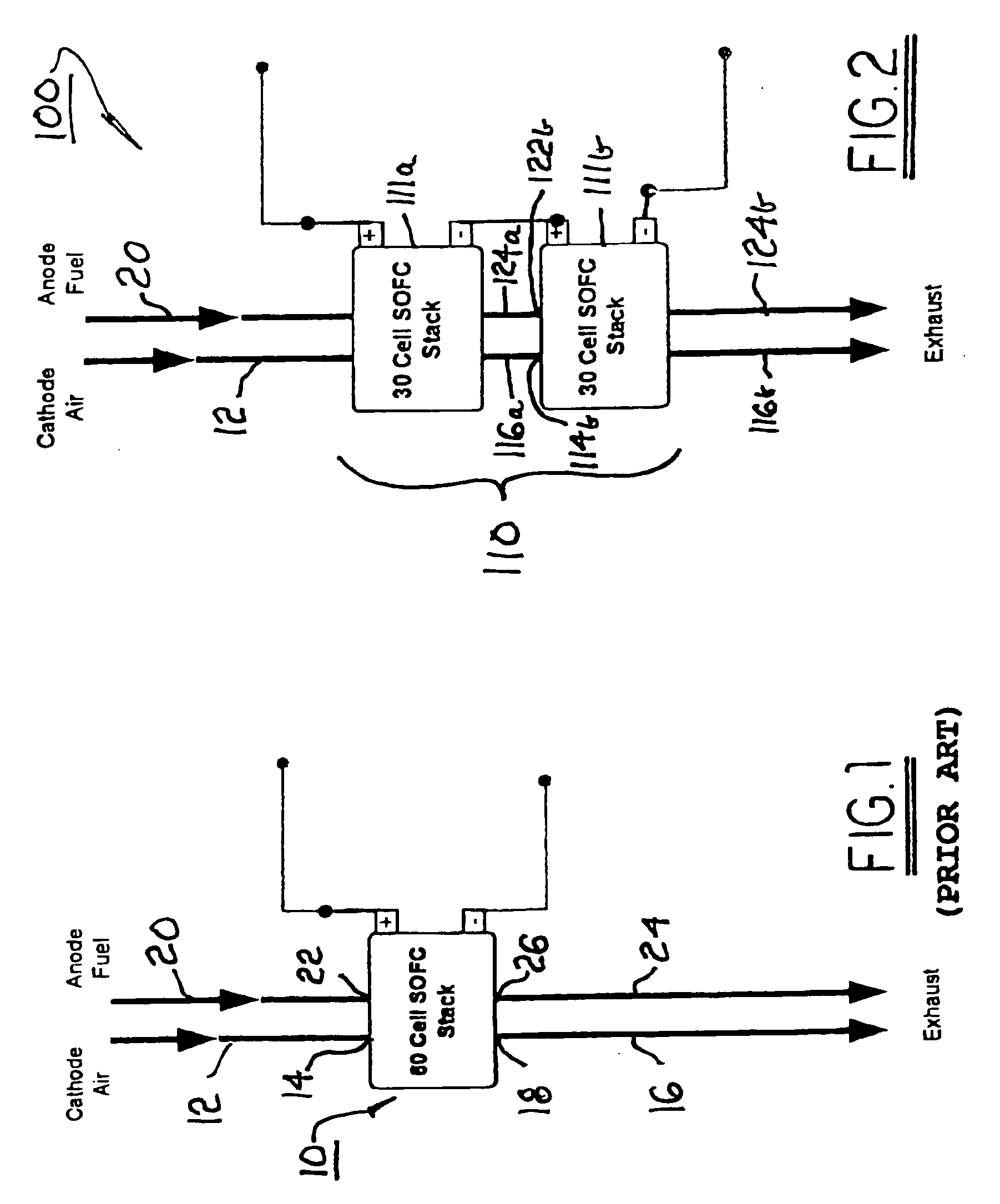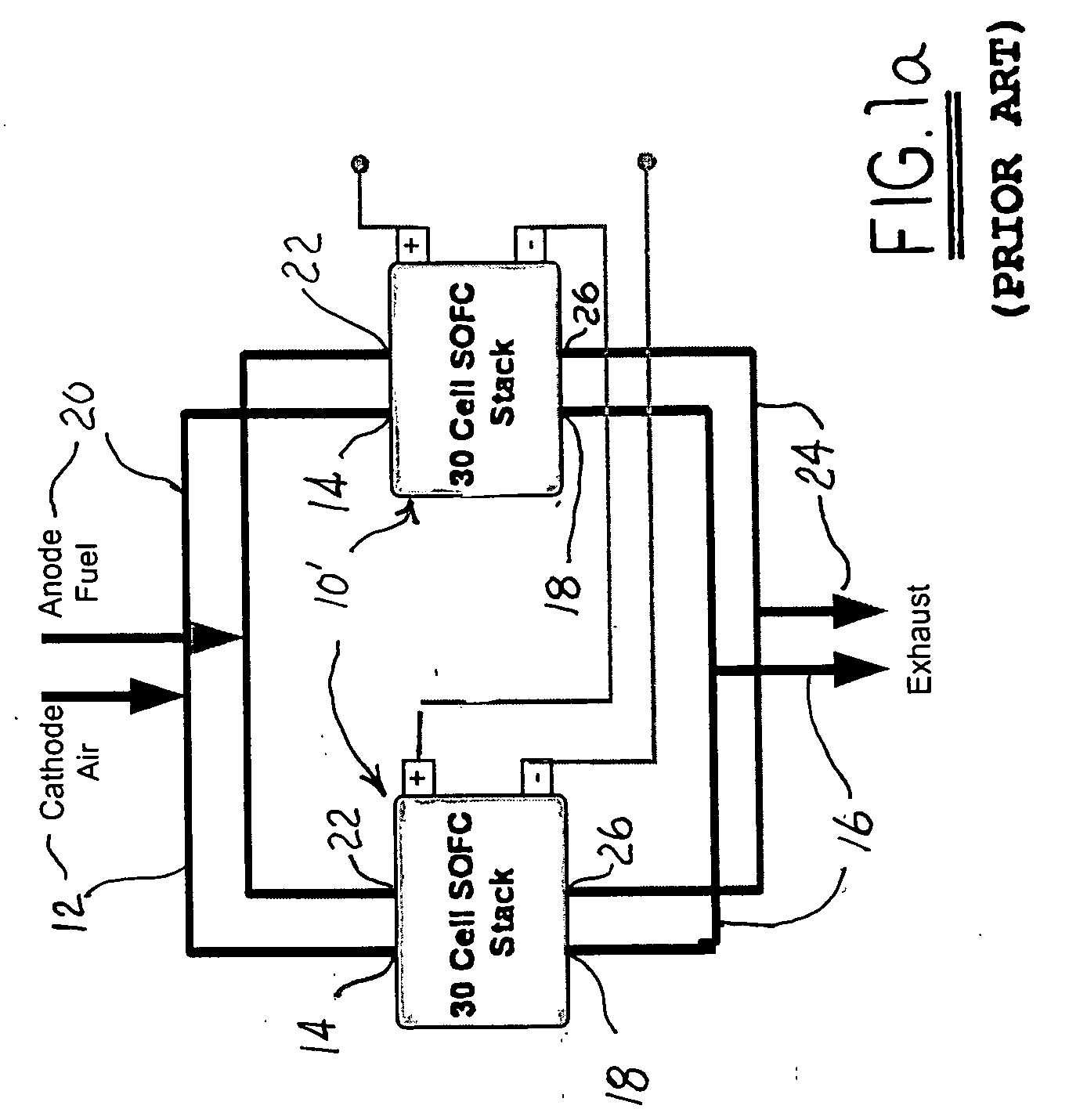Method and apparatus for thermal, mechanical, and electrical optimization of a solid-oxide fuel cell stack
a solid-oxide fuel cell and stack optimization technology, applied in the field of solid-oxide fuel cells, can solve the problems of reducing stack durability, high stress within the stack, and sensitive to uneven flow distribution, so as to improve fuel efficiency and reduce thermal stress , the effect of increasing electrical power generation
- Summary
- Abstract
- Description
- Claims
- Application Information
AI Technical Summary
Benefits of technology
Problems solved by technology
Method used
Image
Examples
example 1
[0032] An SOFC stack configured in accordance with FIG. 1 was operated at a current of 0.9 amps / cm2. With a temperature differential across the stack of 150° C. (inlet temperature 650° C., outlet temperature 800° C.), the stack produced 4810 watts of electricity at 0.74 volts / cell, fuel utilization was 43%, stack efficiency was 21.8%, and an additional 1136 watts of heat was released within the stack.
[0033] Referring to FIG. 2, in a first embodiment 100 in accordance with the invention, a fuel cell stack 110 having a plurality of individual fuel cell elements, for example, 60 cells as in prior art stack 10, is divided into a plurality of sub-stacks, for example, two sub-stacks 111a,111b each containing 30 fuel cell elements, the two sub-stacks being connected in series electrically. Other numbers of sub-stacks are fully comprehended by the invention, and the numbers of fuel cells may or may not be distributed equally among the sub-stacks.
[0034] In accordance with the invention, th...
example 2
[0035] An SOFC stack configured in accordance with FIG. 2 was operated at a current of 0.9 amps / cm2.
[0036] Sub-stack 111a was operated with a temperature differential of 100° C. (650° C. inlet temperature, 750° C. outlet temperature) and produced 2359 watts of electricity at 0.72 volts / cell. Fuel utilization was 21.8%, stack efficiency was 10.7%, and only 177 watts of heat were rejected into the stack. Note that this is a much lower fuel utilization and stack efficiency than for prior art stack 10.
[0037] Sub-stack 111b had an inlet temperature of 750° C. and an outlet temperature of 850° C. Sub-stack 111b produced 2589 watts of electricity at 0.79 volts / cell. Fuel utilization was 28% and the stack efficiency was 15%. The reaction was slightly endothermic, requiring 138 watts of energy from the stack.
[0038] Advantages of the novel stack configuration in accordance with the invention (FIG. 2) vs. the prior art configuration (FIG. 1): [0039] a) the novel configuration produced more ...
PUM
| Property | Measurement | Unit |
|---|---|---|
| temperatures | aaaaa | aaaaa |
| temperature | aaaaa | aaaaa |
| outlet temperature | aaaaa | aaaaa |
Abstract
Description
Claims
Application Information
 Login to View More
Login to View More - R&D
- Intellectual Property
- Life Sciences
- Materials
- Tech Scout
- Unparalleled Data Quality
- Higher Quality Content
- 60% Fewer Hallucinations
Browse by: Latest US Patents, China's latest patents, Technical Efficacy Thesaurus, Application Domain, Technology Topic, Popular Technical Reports.
© 2025 PatSnap. All rights reserved.Legal|Privacy policy|Modern Slavery Act Transparency Statement|Sitemap|About US| Contact US: help@patsnap.com



